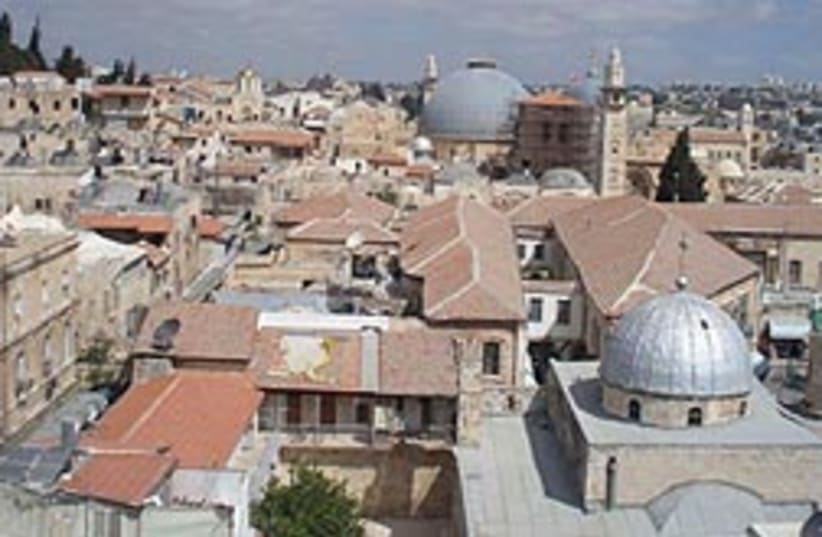But this pastoral picture is deceiving of the site’s history, according to Yaad Biran, a guide for Beit Shmuel’s first weekly English tour of the Old City, which offers insights into the area from the three major religions.
’In biblical times the Israelites provoked the Prophet Jeremiah’s anger in this valley by offering their children as human sacrifices to the false God, Molech,’ Biran says.’The common Hebrew term for ’hell,’ gehinnom, actually derives from this dark period. ’Gehinnom’ means the ’Valley of Hinnom’ in biblical Hebrew, and the authors of the Talmud referred to hell by this name as a result of the atrocities which took place in the valley.’
The Ben Hinnom Valley faired little better in recent history. As the border between Israel and the Jordanian- controlled Old City, it remained a desolate no-man’s land from 1948 until 1967, and was often the site of cross- border shootings.
Objectionable notions are banished, however, upon arrival at the next stop. The rooftop of the Armenian Quarter’s Petra Hotel affords, perhaps, the most spectacular vista of the ancient city. Crosses and domes jut above the red roofs of Christian abodes and the limestone tops of the Muslim Quarter. At the center, the Dome of the Rock commands a regal presence flanked by the Mount of Olives stretching onto the horizon.
The colorful sights and sounds of throngs of tourists dispersed among holy men of various Christian denominations, greet us in the courtyard of the Holy Sepulchre. Biran describes the church’s division into areas controlled by the different denominations, among them the Eastern Orthodox Church, the Roman Catholics and the Ethiopian Church.
The division resulted from the 1852 status quo decree, issued by the then-Ottoman rulers of Jerusalem, to put an end to the arguments among the church’s various claimants.
’Even the small details of the decisions are still adhered to today,’ Biran explains. ’For example, Christians do not hold the keys to the church, but rather these are held by two Muslim families who open it in the morning and lock it at night.’
Inside, visitors congregate at the various elaborately decorated stations providing a detailed depiction of the crucifixion stages. In contrast, our next stop, the room of the Last Supper on Mount Zion, is sparsely adorned and leaves much to the imagination.
The tour also features a visit to the neighboring David’s Tomb as well as a stroll through the bustling markets of the Muslim quarter, a lookout over the Western Wall and more.
| More about: | Armenian Quarter, Muslim Quarter, Jerusalem, Old City (Jerusalem) |
